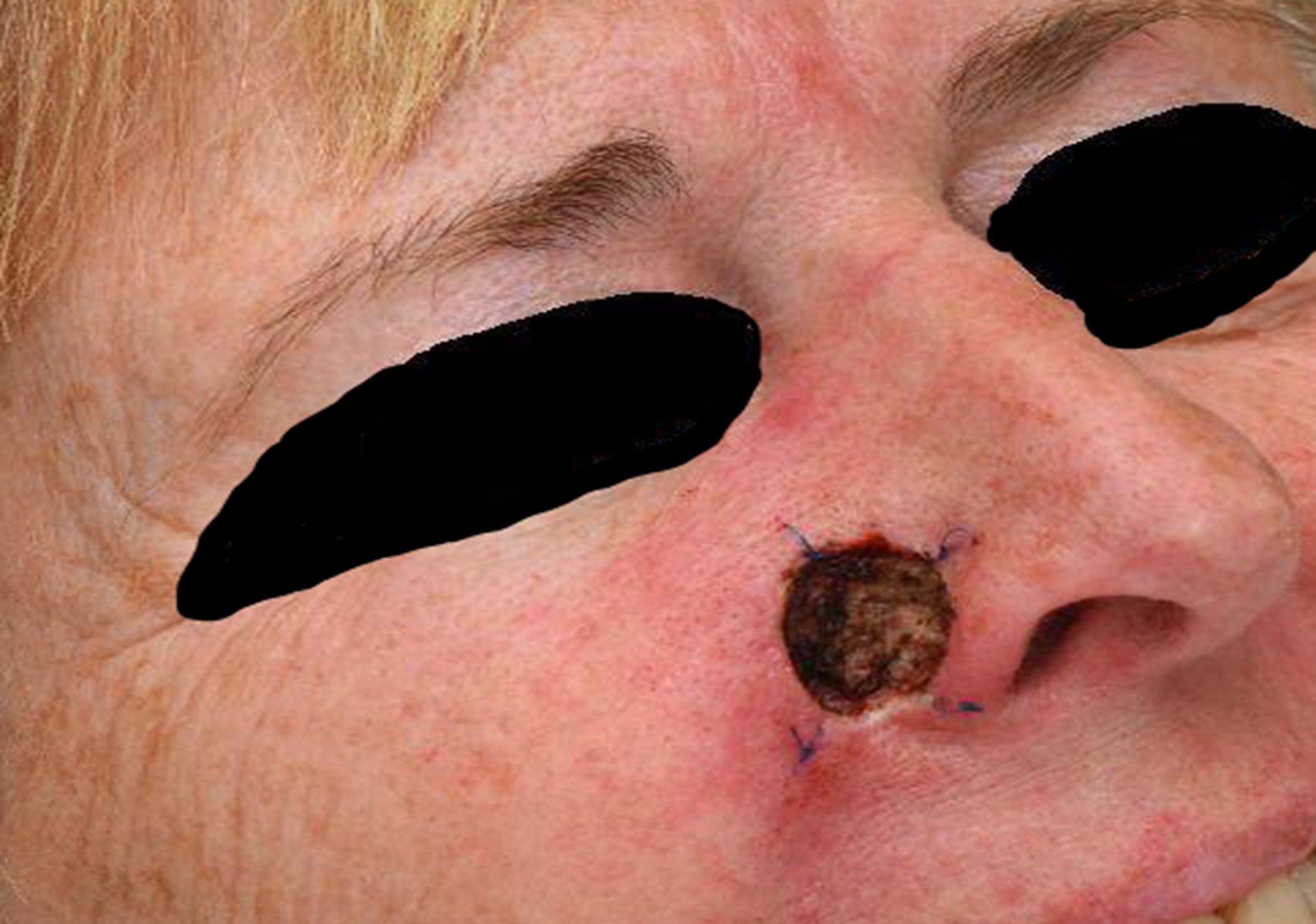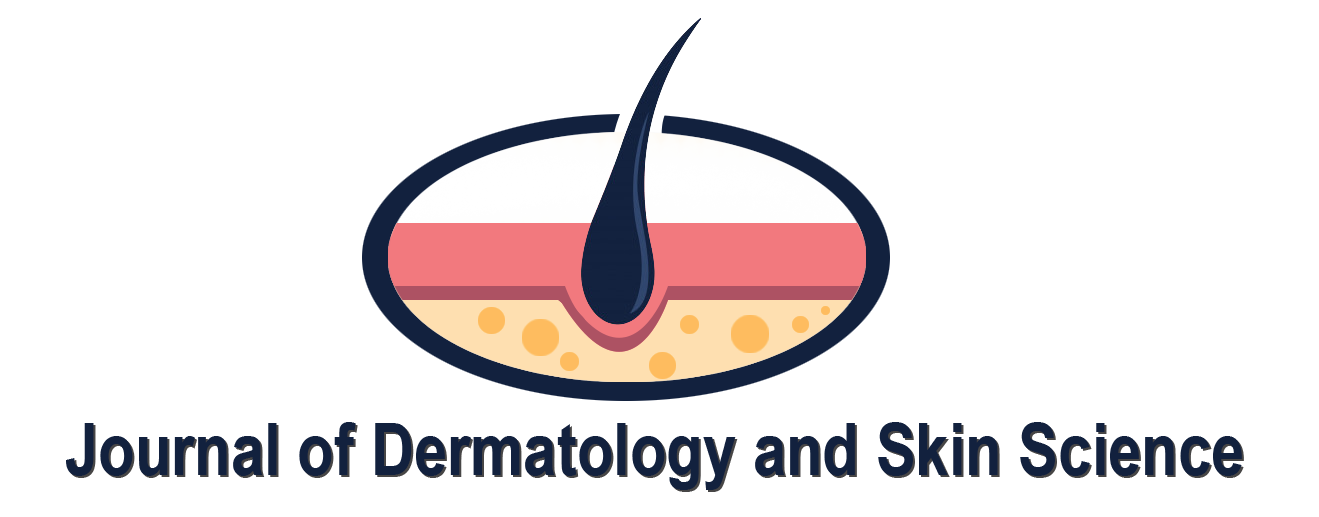How to Reconstruct a Complex Multiunit Skin Defect: A Single-case Survey Study
Inge J. Veldhuizen1-2#, Frederieke F.M. Theelen1#, Maarten J. Ottenhof1, Rene R.J.W. van der Hulst2, Maarten M. Hoogbergen1*
1Department of Plastic and Reconstructive Surgery, Catharina Hospital, Eindhoven, the Netherlands
2Department of Plastic and Reconstructive Surgery, Maastricht University Medical Center, Maastricht, the Netherlands
#These authors contributed equally to this work and are co-first authors
Reconstructing a defect after surgical excision of nonmelanoma skin cancer (NMSC) can be challenging as many different reconstructive options exist.1,2 When choosing a reconstruction method, it is important to understand the patient’s perspective of the scar, operation, and healing process.3 A recent study showed that some patients benefit from receiving a mirror and looking at their defect after NMSC resection and before reconstruction, as this led to higher patient satisfaction.4 A possible reason for this is that patients can adjust their expectations and better understand the origin of the post-operative scar. This emphasizes that involving the patient in the decision-making and considering the patient’s final scar, impacts patient satisfaction after surgery. To capture patient’s experiences and treatment satisfaction, patient-reported outcome measurements (PROMs) are developed. A validated PROM to assess patient satisfaction after facial skin cancer resection and reconstruction is the FACE-Q Skin Cancer Module.5–7 This survey study examines the different reconstructive options of a patient with a surgical defect after Mohs micrographic surgery (MMS) for NMSC and evaluates patient’s satisfaction following reconstruction using the FACE-Q Skin Cancer.
Institutional review board approval was obtained from Catharina Hospital Eindhoven. In August 2019, a 65-year-old woman with a 1.5x1.5cm defect at the right alar crease after MMS was asked to complete the Appearance-related Distress and Appraisal of Scar scales, and the Adverse Effects checklist of the FACE-Q Skin Cancer Module translated to Dutch.8 The questionnaires were sent by email before, one-week, three-months, and one-year after surgery. Higher scores indicated higher psychosocial distress and greater satisfaction with post-surgical scar formation. The Adverse Effects checklist comprises 10 symptoms (e.g., pain, numbness, tingling). Each symptom was scored separately (1-not at all bothered, 2-a little, 3-moderately, 4-extremely bothered).
A national survey was conducted in November 2019. An anonymized picture (Figure 1) of the 65-year-old woman was sent to all plastic surgeons and residents in plastic surgery practicing in the Netherlands (n=453) via the Dutch Society of Plastic Surgery (NVPC). The plastic surgeon or resident in plastic surgery had to choose one reconstructive option. Answer options for reconstruction were primary closure, a full-thickness skin graft (FTSG), a flap reconstruction, a free flap, or other. The survey participants were divided into plastic surgeons and residents in plastic surgery.

Figure 1: Patient case: 65-year-old â with a 1.5x1.5cm defect at the right alar crease
A total of 132 members of the NVPC completed the survey (29.1%). Most of the responders were plastic surgeons (69.7%). The most chosen option was a flap (97.0%), notable a nasolabial flap. However, a wide range of reconstructive options was selected with 9 different flaps (Table 1). The results show a significant difference between the plastic surgeons and the residents regarding their choice of reconstruction (p=0.01) and years of experience as a resident (p=0.01). No significant difference was seen between the reconstructive method and years of experience as a plastic surgeon (p=0.22).
Table 1. Survey reconstructive techniques
|
Reconstructive method |
N (%) |
|
Primary closure |
0 (0.0) |
|
FTSG |
3 (2.3) |
|
Flap Nasolabial flap VY-plasty Bilobed flap Cheek advancement flap Rhomboid flap Mesolabial flap Banner flap Hatched flap Forehead flap Combined proceduresa |
128 (97.0) 65 (50.8) 11 (8.6) 8 (6.3) 7 (5.5) 6 (4.7) 2 (1.6) 1 (0.8) 1 (0.8) 1 (0.8) 26 (20.3) |
|
Free flap |
0 (0.0) |
|
Other Secondary granulation |
1 (0.8) 1 (100) |
aCombination of two reconstructive methods (e.g., VY-plasty and bilobed flap, cheek advancement and bilobed flap)
The 65-year-old woman was reconstructed in August 2019 with a FTSG by a resident in plastic surgery with 3-5 years of experience. Three residents (0-3 years: 2, >5 years: 1) chose FTSG as an adequate reconstructive technique (7.5%), compared to none of the plastic surgeons (0.0%). After reconstruction, the patient was very satisfied with her facial scar, with a perfect scar score three-months (score 100) and one-year post-operative (score 100). The appearance-related distress score slightly increased after surgery; however, the score remained low (before 14, one-week 23, three-months 23, one-year 28). The patient experienced none to minimal adverse effects during the whole period after reconstruction, with the mean for each symptom being less than 2 (a little) on a scale of 1-4 (Table 2).
Table 2. Adverse Effects checklist
|
Adverse Effects checklist |
1-week score |
3-months score |
1-year score |
|
Pain |
1 |
1 |
1 |
|
Discomfort |
2 |
2 |
1 |
|
Sensitivity |
2 |
1 |
1 |
|
Numberness |
2 |
2 |
2 |
|
Tingling |
1 |
1 |
1 |
|
Tightness |
1 |
2 |
2 |
|
Itchiness |
1 |
2 |
1 |
|
Swelling |
2 |
2 |
1 |
|
Bruising |
2 |
1 |
1 |
|
Difficulty facial movements |
2 |
1 |
1 |
Although the participants received a limited survey in order to achieve a high response rate, our data showed that a wide range of reconstructive techniques is considered in Dutch plastic surgery practice. Since many different reconstructive options exist, it is often difficult to choose the best technique for specific patients. FTSG is a fast and simple reconstruction with minimal scarring. Flaps may avoid contour defects and can lead to high aesthetic outcomes.9 By keeping both the differences in skin characteristics (e.g., skin color, texture, and thickness) and contouring of facial subunits in mind, the scar can be strategically positioned and therefore camouflaged.10,11 However, it may lead to a larger operation and larger post-surgery scars. Even though 97.0% of the participants chose a flap reconstruction as an adequate reconstructive technique, a simple reconstruction with a FTSG showed maximum satisfaction with the post-surgical scar and low appearance-related distress. Although this survey is limited by one patient case and not every defect may be suitable for a simple reconstruction, this study shows that the patient’s perspective on satisfying outcomes often differs from that of the surgeon. It is not always necessary to choose the most challenging or extensive reconstructive technique to obtain a satisfactory outcome.
Keeping it simple while managing patient expectations can often yield the best overall outcome. By involving the patient in the decision process and explaining the different simple and complex reconstructive options higher satisfaction can be obtained.
Conflict of interest Disclosures: None reported
Financial disclosure and products: No funding for this project was received.
References
- Veldhuizen IJ, Budo J, Kallen EJJ, et al. A Systematic Review and Overview of Flap Reconstructive Techniques for Nasal Skin Defects. Facial Plast Surg Aesthet Med. Published online March 1, 2021. doi:10.1089/fpsam.2020.0533
- Johnson AR, Egeler SA, Wu WW, et al. Facial Reconstruction After Mohs Surgery: A Critical Review of Defects Involving the Cheek, Forehead, and Perioral Region. J Craniofac Surg. 2019; 30(2): 400-407. doi:10.1097/SCS.0000000000005074
- Mori S, Lee EH. Beyond the physician’s perspective: A review of patient-reported outcomes in dermatologic surgery and cosmetic dermatology. Int J Womens Dermatol. 2019; 5(1): 21-26. doi:10.1016/j.ijwd.2018.08.001
- Veldhuizen IJ, Lee EH, Kurtansky NR, et al. To see or not to see: Impact of viewing facial skin cancer defects prior to reconstruction. Arch Dermatol Res. Published online January 30, 2021. doi:10.1007/s00403-021-02187-1
- Lee EH, Klassen AF, Nehal KS, et al. A systematic review of patient-reported outcome instruments of nonmelanoma skin cancer in the dermatologic population. Journal of the American Academy of Dermatology. 2013; 69(2): e59-e67. doi:10.1016/j.jaad.2012.09.017
- Lee EH, Klassen AF, Cano SJ, et al. FACE-Q Skin Cancer Module for measuring patient-reported outcomes following facial skin cancer surgery. British Journal of Dermatology. 2018; 179(1): 88-94. doi:10.1111/bjd.16671
- Lee EH, Klassen AF, Lawson JL, et al. Patient experiences and outcomes following facial skin cancer surgery: A qualitative study. Australas J Dermatol. 2016; 57(3): e100-104. doi:10.1111/ajd.12323
- Ottenhof MJ, Lardinois AJPM, Brouwer P, et al. Patient-reported Outcome Measures: The FACE-Q Skin Cancer Module: The Dutch Translation and Linguistic Validation. Plast Reconstr Surg Glob Open. 2019; 7(10): e2325. doi:10.1097/GOX.0000000000002325
- Lindsay KJ, Morton JD. Flap or graft: The best of both in nasal ala reconstruction. J Plast Reconstr Aesthet Surg. 2015; 68(10): 1352-1357. doi:10.1016/j.bjps.2015.05.036
- Burget GC, Menick FJ. The subunit principle in nasal reconstruction. Plast Reconstr Surg. 1985; 76(2): 239-247. doi:10.1097/00006534-198508000-00010
- Menick FJ. Facial reconstruction with local and distant tissue: the interface of aesthetic and reconstructive surgery. Plast Reconstr Surg. 1998; 102(5): 1424-1433. doi:10.1097/00006534-199810000-00015
